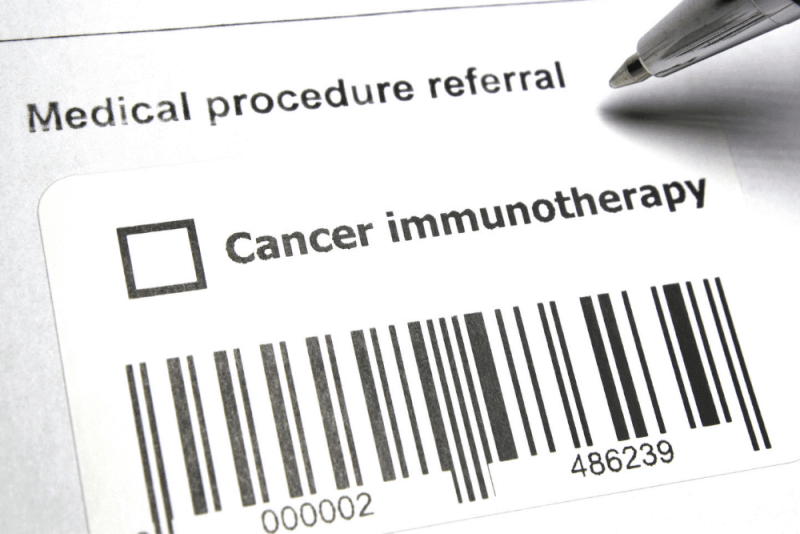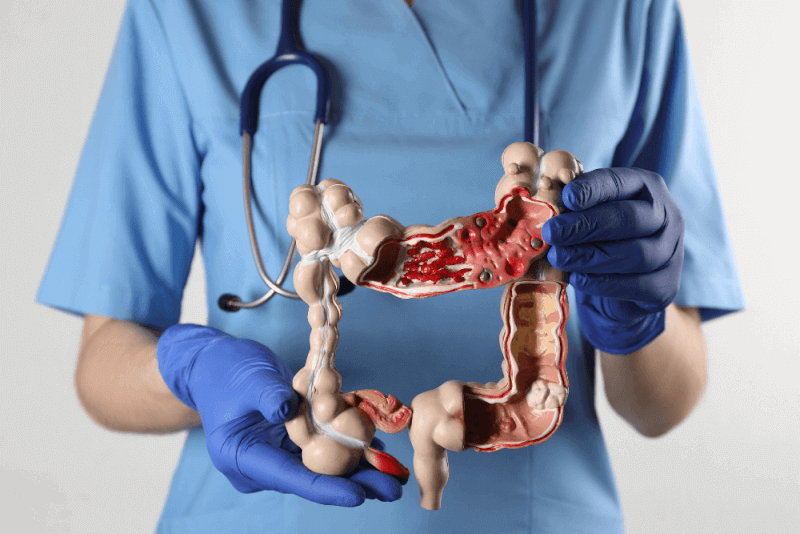What is Ewing Sarcoma?
Ewing sarcoma is a type of cancer seen in the cells of the bone and soft tissue around the bone. Although Ewing sarcoma, which occurs due to the uncontrolled proliferation of these cells, can be seen in people of all ages, it usually affects children and young adults.
The most common sites of the disease include the bones of the legs and the pelvis. However, it can also be seen in other bones. The least common sites of sarcoma include the chest, abdomen, arms, and other soft tissues.
While significant advances in the treatment of the disease have improved the outlook for this cancer, some patients face late effects of the treatment. Since young people who receive chemotherapy for treatment live longer, it is necessary to monitor the long-term side effects after treatment.
Causes of Ewing Sarcoma
The exact cause of Ewing sarcoma is unknown. Like other types of cancer, it occurs due to changes in the DNA of cells. The DNA of a cell contains instructions that tell the cell what to do. Cells with healthy DNA follow instructions to grow and multiply at a certain rate. These instructions also ensure that cells die at a certain time.
In cancer cells, different instructions are given due to DNA changes. These changes cause cancer cells to reproduce much faster and live longer.
Cancer cells can form a mass called a tumor. The tumor can grow and invade healthy body tissue. Over time, cancer cells can break off and spread to other parts of the body. This condition is called metastatic cancer.
In Ewing sarcoma, DNA changes usually affect a gene called EWSR1. Therefore, if Ewing sarcoma is suspected, cancer cells are tested for changes in this gene.
Symptoms of Ewing Sarcoma
Symptoms caused by Ewing sarcoma typically start in and around a bone. Symptoms caused by cancer, which usually affects the bone tissues in the legs, include:
- Swelling in the arm, leg, chest, or pelvis
- Bone pain
- Bone fracture
- Pain, swelling, or tenderness near the affected area
Ewing sarcoma also has symptoms that affect the entire body, including:
- Fever
- Unintentional weight loss
- Fatigue
Diagnosis Criteria for Ewing Sarcoma
The diagnosis process usually starts with a physical examination. Different tests and procedures can be applied based on the examination results.
Imaging tests
Imaging tests help determine the location and size of Ewing sarcoma by taking pictures of the body. These tests include:
- X-ray
- MRI
- CT
- Bone scan
- PET scan
Removing a cell sample for testing
For this procedure, also known as a biopsy, a tissue sample is taken for testing in a laboratory. The tissue is removed using a needle inserted into the tumor. In some cases, patients may need surgery to obtain a tissue sample.
The sample is then specially tested in laboratories to determine if it is cancerous. Biopsy tests, along with other specialized tests, provide more details about the cancer cells. Biopsy is also performed to confirm the diagnosis of Ewing sarcoma.
Testing cancer cells for DNA changes
A sample of cancer cells is tested in a laboratory to find out what DNA changes are present. Ewing sarcoma cells usually show changes in the EWSR1 gene. In most cases, the mentioned gene merges with another gene called FLI1 to create a new gene. Testing the cancer cells helps confirm the diagnosis.
Treatment Methods for Ewing Sarcoma
Treatment for Ewing sarcoma usually involves chemotherapy and surgery. Which treatment is prioritized depends on the patient's specific conditions. Other treatment options include radiation therapy and targeted therapy.
Chemotherapy
Chemotherapy is the treatment of cancer with powerful drugs. In some cases, it is used as the first treatment for Ewing sarcoma. This shrinks the cancer and makes it easier to remove with surgery or target with radiation therapy.
Chemotherapy treatments applied after surgery or radiation therapy can kill any remaining cancer cells. In addition, chemotherapy helps relieve pain and slow the growth of advanced cancer that has spread to other parts of the body.
Surgery
The main goal of surgical procedures in Ewing sarcoma is to remove all cancer cells. These surgeries require the removal of a small portion of the bone and some surrounding tissues. Rarely, it may be necessary to remove the affected arm or leg completely.
If these surgeries are performed on an arm or leg, the use of that limb is affected.
To minimize this risk, surgeries are planned in detail. The ability of surgeons to remove the cancer without removing the entire bone depends on various factors. These factors include the size of the cancer, where it is located, and whether chemotherapy has helped shrink it.
Radiation therapy
Radiation therapy treats cancer with powerful energy beams. These energies include X-rays, protons, or other sources. During radiation therapy, patients lie on a table while a machine moves around them. The machine directs radiation to specific points in the body.
Radiation therapy is particularly recommended to kill any remaining cancer cells after surgery. In addition, radiation therapy can be applied instead of surgery in cases where surgery is not possible or poses a risk of damaging nearby organs. In advanced cases, radiation therapy is used to slow the growth of cancer and relieve pain.
Targeted therapy
Targeted therapy uses drugs that attack specific pathways cancer cells use to grow. Targeted therapies block these specific points in the cells, causing the cancer cells to die. Researchers recommend using targeted therapy for Ewing sarcoma when the cancer returns or does not respond to other treatments.
Side Effects of Ewing Sarcoma Treatment
All cancer treatments cause various side effects. Side effects vary depending on the treatment applied. Side effects of chemotherapy and radiation therapy include:
- Diarrhea
- Nausea
- Vomiting
- Fatigue
Whatever the side effects of Ewing sarcoma treatment, patients may want to consider palliative care. Palliative care can help alleviate symptoms and side effects of treatment. Palliative care providers also help patients understand their treatment options.
Children with Ewing sarcoma often experience late effects of treatment. Late effects are health problems that occur months or years after treatment. These health problems may include secondary cancers, which are new and different cancers that develop after cancer treatment is completed. Cancer treatment can cause the following problems in people:
- Damage to organs and tissues
- Impact on growth and development
- Effects on mood, emotions, and mental health
- Impact on the ability to think, learn, and remember information
- Impact on the ability to have children
Stages of Ewing Sarcoma
The stage of cancer provides information about how much the cancer has spread and the size of the tumor. Various tests are used for this. Determining the stage helps to know how the cancer can be treated. Different staging systems are used in Ewing sarcoma.
Localized Ewing Sarcoma
Localized cancer in Ewing sarcoma indicates that the cancer is only in the tissue where it first started. Cancer cells may also be seen in nearby tissues such as lymph nodes. This stage of cancer has not spread to other parts of the body based on imaging tests and bone marrow biopsy.
However, even if imaging tests do not show cancer in other parts of the body, small amounts of cancer may have spread to another area. Therefore, chemotherapy, which can kill cells anywhere in the body, is an important part of sarcoma treatment.
Metastatic Ewing Sarcoma
In the metastatic cancer stage of Ewing sarcoma, the cancer has spread from where it started to other parts of the body. The areas where it has spread include the lungs, other bones, or bone marrow. Rarely, it has spread to the lymph nodes and liver.
Recurrent Ewing Sarcoma
If Ewing sarcoma that does not respond to treatment or was successfully treated returns, it is referred to as recurrent Ewing sarcoma. The most common site of recurrence is the lungs. A long period between the initial diagnosis and the recurrence of the disease is associated with a better prognosis.
TNM Staging of Ewing Sarcoma
The TNM staging groups, which are also used in other types of cancer, are used in Ewing sarcoma as well.
Stage 1
Stage 1 is not used because the tumors caused by Ewing sarcoma are high grade, such as G2 or G3.
Stage 2
Stage 2 of Ewing sarcoma is divided into 2 subgroups. In stage 2A, the tumor is high grade and does not exceed 8 centimeters in diameter. Additionally, it does not spread to nearby lymph nodes or organs in other parts of the body.
In stage 2B, the tumor is high grade and larger than 8 centimeters. Additionally, cancer cells do not spread to the lymph nodes or organs in other parts of the body.
Stage 3
In stage 3 of Ewing sarcoma, multiple high-grade tumors are found in the same bone. Additionally, cancer cells have not spread to nearby lymph nodes or other parts of the body.
Stage 4
Stage 4 of Ewing sarcoma is also divided into two parts. In stage 4A, the cancer has spread to the lungs but not to the lymph nodes or other organs in the body. Tumors in this stage can be of any size or grade.
In stage 4B, two different scenarios can be seen. In the first scenario, the cancer has spread to nearby lymph nodes and may or may not have spread to other organs in the body. The size and grade of the tumor may vary in this stage.
In the second scenario of stage 4B, the cancer spreads to other organs in the body but not to the lungs. Nearby lymph nodes may or may not be affected by the cancer. Tumors in this stage can be of any size or grade.
Risk Factors for Ewing Sarcoma
Risk factors for Ewing sarcoma include:
- Although the disease can be seen in all age groups,
it is more common in children and young adults. Therefore, being young is a risk factor.
- Ewing sarcoma is more common in people of European descent. However, it is known to be less common in people of African and East Asian descent.
Recovery Rate of Ewing Sarcoma
The survival rate for Ewing sarcoma varies depending on whether the cancer has spread. If the cancer has not spread, the 5-year survival rate is 82%. If the cancer has spread, the survival rate varies between 39% and 71% depending on how much it has spread.
Types of Ewing Sarcoma
Ewing sarcoma is divided into 4 different types depending on where it occurs.
Bone tumor
87% of Ewing sarcomas occur in the bones. They are usually found in the thigh, pelvis, ribs, and upper arm bones. However, the tumor can grow in any bone.
Soft tissue tumor
This type of Ewing sarcoma occurs in soft tissues such as cartilage around the bones.
Peripheral primitive neuroectodermal tumor
This type of tumor, which consists of nerves, can grow in many parts of the body. It is briefly referred to as PNET.
Askin tumor
It is a type of PNET tumor that occurs in the chest wall.







